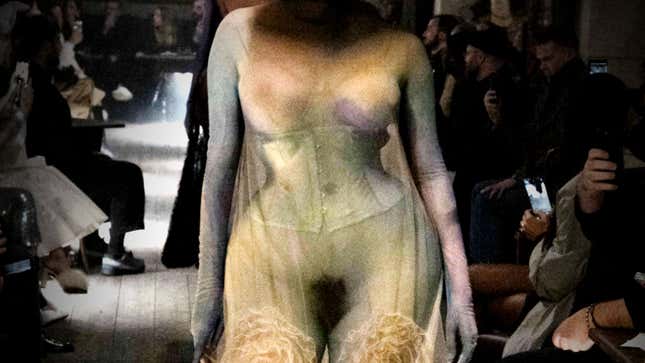The Skims Nipple Bra and Margiela Merkin Are Empty Signifiers of a Sex-Starved Culture
It’s a trend we can trace throughout much of contemporary fashion—the idea that we’re signaling sex but not actually having it.
In Depth

Fashion, like any art form, serves as a cultural barometer. It both reflects and dictates our anxieties, our hopes, and our sense of collective and individual selves. And right now, fashion is saying this: We want our bodies to be lively, erotic, energetic things—or at least, we want them to appear that way.
The Skims nipple bra, designed to make its wearer appear to always have hard nipples, says we’re perky, bold, and horny. The recent John Galliano Margiela couture runway show featuring women with bush merkins beneath sheer dresses says we’re brazen, sexually mature, and carnal. People were generally excited about these looks—both were met with tweets and articles announcing that nipples and bush are “back.” With both items, though, these statements are achieved through artifice. Why are we so interested in signaling these markers of sex yet so afraid of showing off the real thing?
-

-

-

-

-

-

-

-

-

-

-

-

-

-

-

-

-

-

-

-

-

-

-

-

-

-

-

-

-

-

-

-

-

-

-

-

-

-

-

-








































